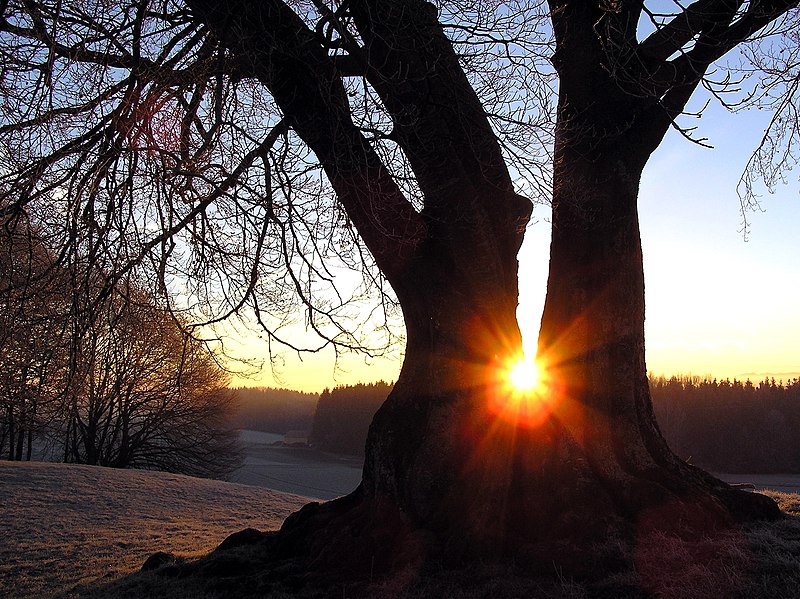 |
| Photograph by Ian Capper, shared via Creative Commons License |
As Vanatru or Earth-centered Heathens, it's easy to love the Vanir. They're flashy, they're green, they grant prosperity and fertility - usually thought of as warm and friendly in contrast to the more 'stern' of the Norse deities such as Odhinn and Tyr.
Where I live on the Midwest prairie, it's hard to forget about winter. And yet I think many Pagans often forget about
honoring this time of darkness and cold. In my many gardening adventures, one important thing I've learned is that many of the plants that grow in my home state can't grow farther south, where the winters are short and warm if they exist at all. They require this period of dormancy, of rest in the cold earth. And yet, it's important that the land doesn't become
too cold - below zero temperatures for weeks at a time can spell disaster for many plants typically grown in Nebraska. As a person who honors this land and its weather, not recognizing and encouraging a natural, normal winter takes away from my practice and my relationship with the land.
And so we come to the old Icelandic holiday of Thorrablót. Last year,
I addressed some etymological questions about this day as Thor's, and came to the conclusion that as an Earth-centered Heathen, this day and season more appropriately belong to Thorri, a spirit of winter and cold. Anglo-Saxon Heathens may choose to honor Jack Frost, who has similar folklore origins. This year, I've taken the time to write a small ritual to propitiate this king of frost, that the spring may come in a timely fashion.
First, prepare a small feast or special meal that can be shared with the spirits; if you want to go all out, there are many traditional Icelandic dishes associated with the holiday. Also have a special drink on hand - preferably mead, but any alcohol or 'fancy' drink will do. In fact, if you prefer the non-alcoholic route, hot cocoa or mulled cider would be a particularly suitable offering!
 |
| via Creative Commons License |
Once the meal is ready, make up a small plate and take it and the drink outside with you, into the cold. If you have an outdoor altar, perform the ritual there - otherwise the threshold of the home or natural place that calls to you are good options. Call out and address Thorri, saying:
"Hail King of the Frost, son of Snow-King,
You rule this icy winter.
The chilling winds that blow are Yours,
the gray clouds that hide the sun are Yours,
the frozen crystals that cover the ground are Yours.
I come bearing gifts for the Frost-King,
food for the spirits to warm Your heart,
to turn aside the winter winds,
to relent in the cold that covers all."
Set the plate of food on the altar or ground, and raise your glass.
"Hail Thorri, great King, who gives the world rest,
Ancestor of my heart, bringing sparkling frost,
I honor Your gifts and welcome their return
in their due course, in Your right season.
Hail to Thorri!"
Drink half the glass and pour the other half out. You may eat your feast outdoors, or if weather or other circumstances prevent, inside looking out at the winter landscape.















